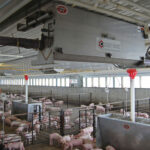June 5th Is a Day To Save and Celebrate
Today marks the 41st anniversary of the United Nations Environmental Programme’s World Environment Day. Each year this day is dedicated to stimulating the public’s interest and awareness on a relevant environmental issue in the world. This year’s chosen theme is...
June 5th Is a Day To Save and Celebrate
Today marks the 41st anniversary of the United Nations Environmental Programme’s World Environment Day. Each year this day is dedicated to stimulating the public’s interest and awareness on a relevant environmental issue in the world. This year’s chosen theme is...Today marks the 41st anniversary of the United Nations Environmental Programme’s World Environment Day. Each year this day is dedicated to stimulating the public’s interest and awareness on a relevant environmental issue in the world. This year’s chosen theme is “Think, Eat, Save”. The campaign is dedicated to reminding us that we can make a difference through simple, day-to-day choices, and improving upon the efficiency of current food manufacturing and distribution processes. 
There are many things people don’t consider when purchasing goods from the grocery store. For instance, people often do not recognize that each year 1.3 billion tons of food are wasted. This is equivalent to the same amount produced in the entire sub-Saharan region of Africa. Farmers and people involved in agriculture may understand the processes involved in how food ends up in the grocery store, but many fail to recognize that this involves much more than a farmer sending his goods directly to the local grocery store. In reality, food production entails much more than this.
Agricultural products must be grown, harvested, shipped to storage facilities, processed in manufacturing plants, and then transported across countries, states, and communities to distribution centers. In each phase of the value chain food is wasted, but how it is wasted differs. In developing nations inadequate harvesting technologies, poor post-harvest management, lack of suitable infrastructure, and other inefficient methods can lead to food waste. The Food and Agriculture Organization of the United Nations estimates that in developing countries 40% of losses occur at post-harvest and processing levels.
AGCO is committed to supporting farmers and agribusiness to reduce these losses and help ensure the efforts of our farmers are not wasted. AGCO offers technologies that work to reduce the amount of waste created in the harvesting process. AGCO offers combine harvesters with new levels of cutting edge threshing, separating, and easy grain sampling and tank coverings which all contribute to optimum harvesting results in even the most challenging conditions. For post-harvest needs GSI grain storage systems have been designed to minimize the amount of crop spoilage between when the crops are harvested to when they are needed in the next phase of the supply chain. Our solutions greatly help the reduce waste generated in the agricultural process.
According to a recent report produced by FAO in joint collaboration with the World Bank “Missing Food: The Case of Post- Harvest Grain Losses in Sub Saharan Africa”, investing in post-harvest technologies may reduce food losses and increase the food supply in sub-Saharan Africa where food losses are estimated to be USD 4 billion per year. This would allow 48 million people to have the food necessary for living.
The United Nations Environmental Programme’s World Environment Day: Think, Eat, Save wishes to inform the global population of the potential impact each person can have on food conservation. Next time you enter the grocery store, think about where the food you are purchasing comes from, how it got there, and all the effort that made it possible.
For more information, visit UNEP’s World Environment Day home page to learn more about World Environment Day, and how people around the world are making a difference!



